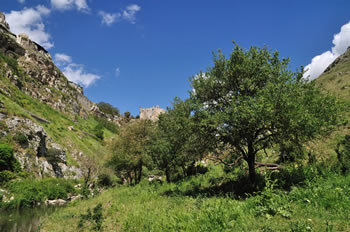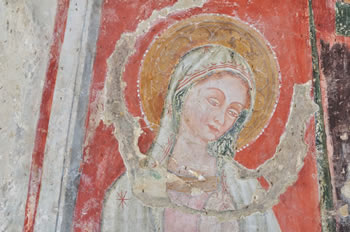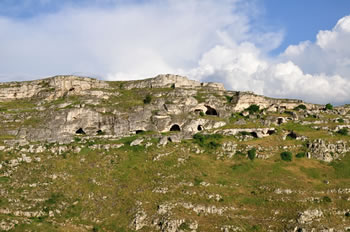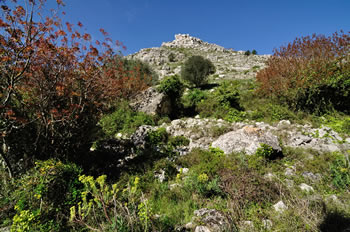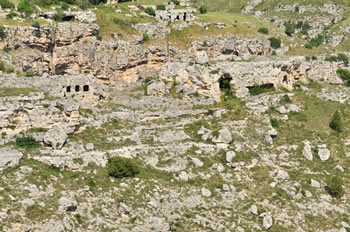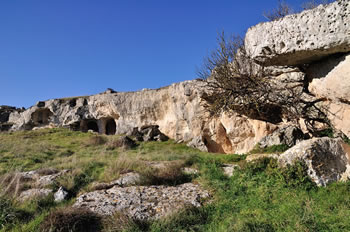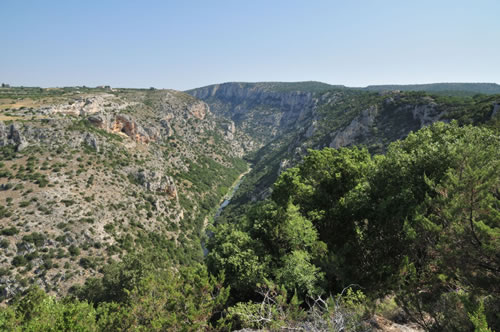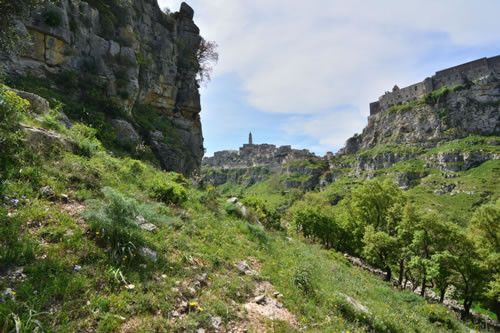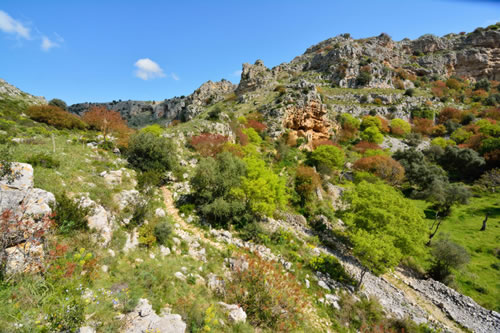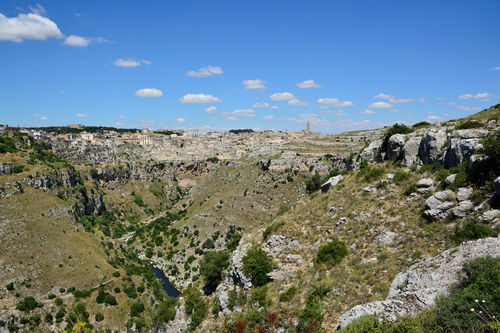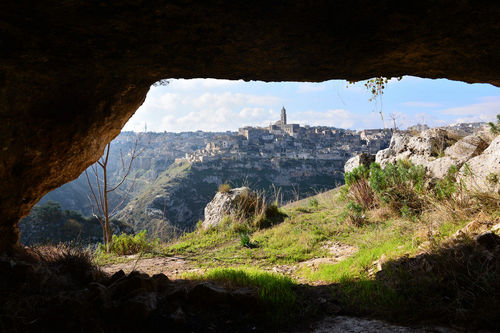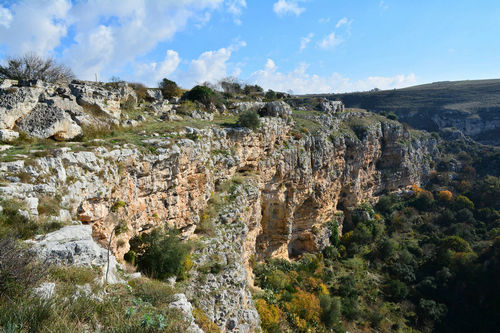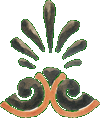The Natural Historical Archaeological Park of the Rupestrian Churches of Matera, known more briefly as the Murgia Materana Park, contains one of the most spectacular rock landscapes in the world which develops along the canyons formed by the Gravina di Matera and the Gravina di Picciano, both tributaries of the river Bradano. The Park is located on the opposite side of the canyon from the Sassi di Matera.
The Park includes an area of approximately 8,000 hectares of which approximately 1,000 were included by UNESCO in 2007 in the list of World Heritage Sites together with the Sassi of Matera.
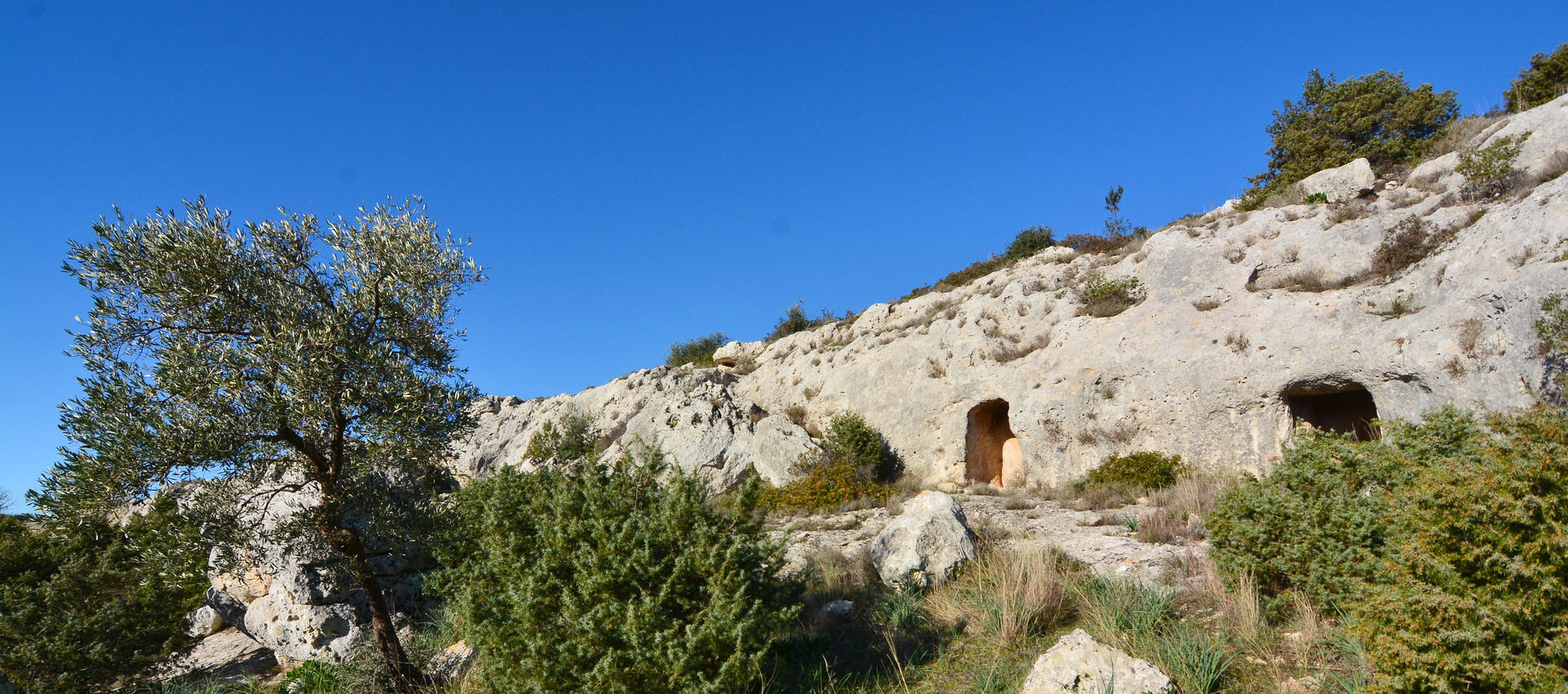
Murgia Park
The Murgia Materana Park is made up of different environments, first of all the fluvial one of the Gravina di Matera which runs for 20 kilometers through the center of the canyon until it joins the Bradano river in the Montescaglioso area. On the sides there are steep, high slopes whose maximum height above sea level is that of the Contrada Tempa Rossa, a majestic cliff that can be seen from as far as the Ionian Coast of Metapontino.
Other typical environments of the park are small valleys, small valleys and ravines, with a series of terraces and plateaus upstream where many species of great botanical and faunal interest can be found. Depending on the exposure, the geological nature and the presence of springs or water flow courses, the park presents a notable alternation of landscapes characterized by woods, thick Mediterranean scrub and areas where for centuries man has carried out agricultural practices typical of the Murgian environment evidenced by the presence of a significant number of farms.
Other typical environments of the park are small valleys, small valleys and ravines, with a series of terraces and plateaus upstream where many species of great botanical and faunal interest can be found. Depending on the exposure, the geological nature and the presence of springs or water flow courses, the park presents a notable alternation of landscapes characterized by woods, thick Mediterranean scrub and areas where for centuries man has carried out agricultural practices typical of the Murgian environment evidenced by the presence of a significant number of farms.
Rupestrian landscape
The Murgia Materana Park contains a large number of rock villages that characterize its cultural landscape, testifying to human settlements from prehistoric times to the modern age. After the Middle Ages these rock complexes or farmhouses were mainly used as shelters for animals in sheep farming practices.
In addition to those mentioned in the more accessible places of Murgia Timone, Murgecchia and Contrada Palomba, the most important complexes are located south of the city of Matera where the Park extends to the territory of the neighboring municipality of Montescaglioso. To the south east are the complexes of the Agna district where there is the famous Grotta dei Pistrelli whose finds are exhibited in the Ridola National Museum, the complex of Ofra, of the Santissimo Crocifisso alla Selva (known as Cristo la Selva), the Village Saraceno, the complexes of Murgia S. Andrea in the countryside of Montescaglioso.
To the south along the Gravina di Picciano there are many other complexes such as those of Santa Lucia al Bradano, and above all that of the Crypt of Original Sin, whose paintings dating back to the Lombard era are of exceptional historical and cultural value.
>> Parcomurgia.com

 Home
Home
